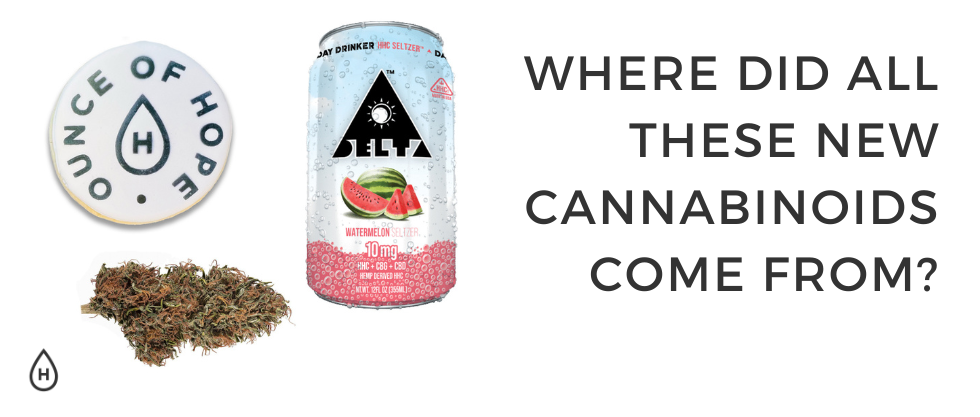When the 2018 Farm Bill legalized hemp and its derivatives, new hemp compounds emerged across the market. Unfortunately, recent discoveries manage to outpace even the ability to research them thoroughly, though research is catching up. But where did all these new cannabinoids come from?
We want to share our insight on the matter since we sell these cannabinoids ourselves.
Not every hemp compound is created equal.
With the protection of the Farm Bill, researchers dig into cannabis and sort through compounds that inhabit this fantastic plant.
Today, we’re going to dive into the origin of each of these compounds.
How Did We Get New Cannabinoids?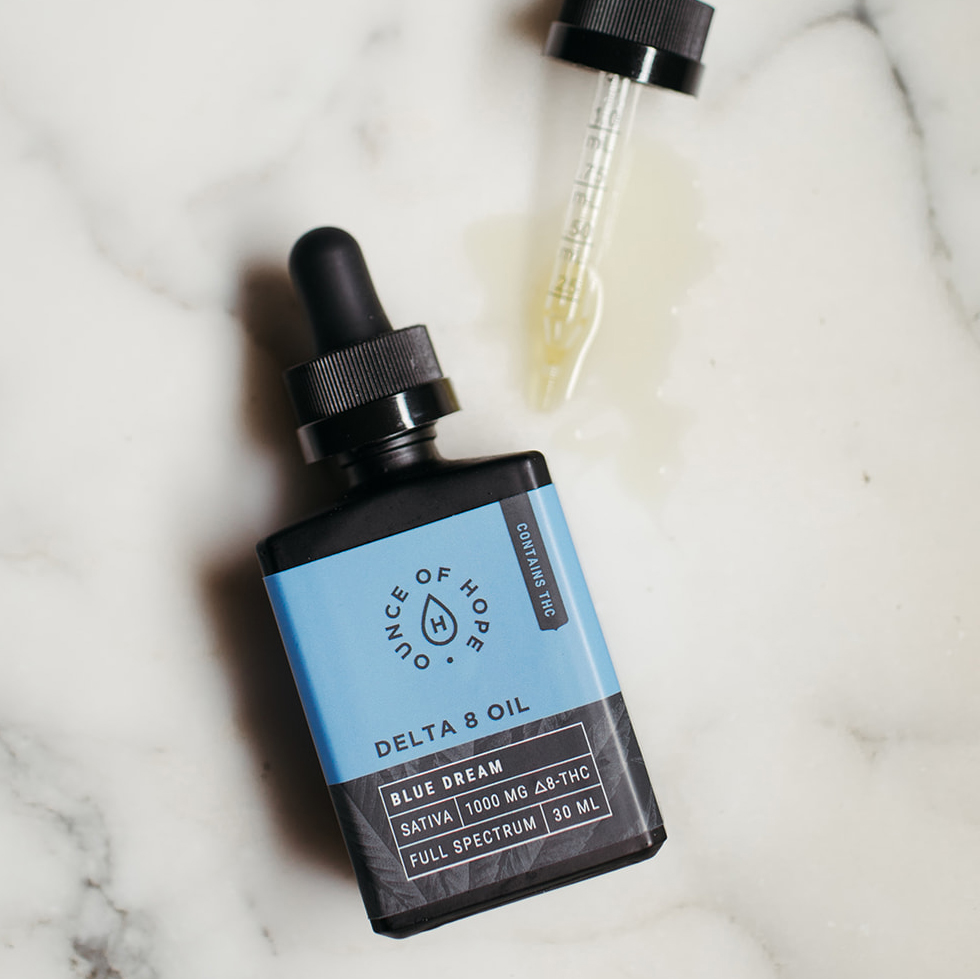
Cannabinoids as we know them have two main avenues for coming into existence. The first is as old as cultivation, with crops spliced for effect and grown to produce a specific cannabinoid concentration.
This intentional cross-breeding has produced new cannabis strains with much more potent cannabinoids than nature makes.
The second is lab-based manipulation. Either in the form of changing the chemical structure of a cannabinoid or concentrating ones that are found in tiny quantities naturally.
Both methods require human intervention to become viable, and you can’t just breed into a strain.
People use both methods to find new compounds belonging to the THC family and its cousin compound, CBD.
With much more leeway granted to growers and researchers thanks to the 2018 Farm Bill, the way these compounds form is seeing levels of study never before performed. This has shown us a whole new world hidden within the cannabis plant.
Where Did New Cannabinoids Come From?
A lot of buzz has been generated in the cannabis community surrounding new forms of THC isolates that have all hit the market in rapid succession. Most of these new cannabinoids have never been available to the public the way they are now.
Some new compounds are available in tiny amounts already. They are considered a minor cannabinoid and have such low quantities that, without human help would not be usable in their natural state.
For those, a long and careful process of isolating these cannabinoid compounds allows pure, distilled products to be made.
For other compounds, alterations occur through chemical means. The process usually involves solvents and acids, which are used to change the chemical chain of a cannabinoid. One example of this process is delta-8.
By altering the genetic makeup of these cannabinoids, new versions can be made, and some naturally occurring in small amounts can be synthesized in bulk.
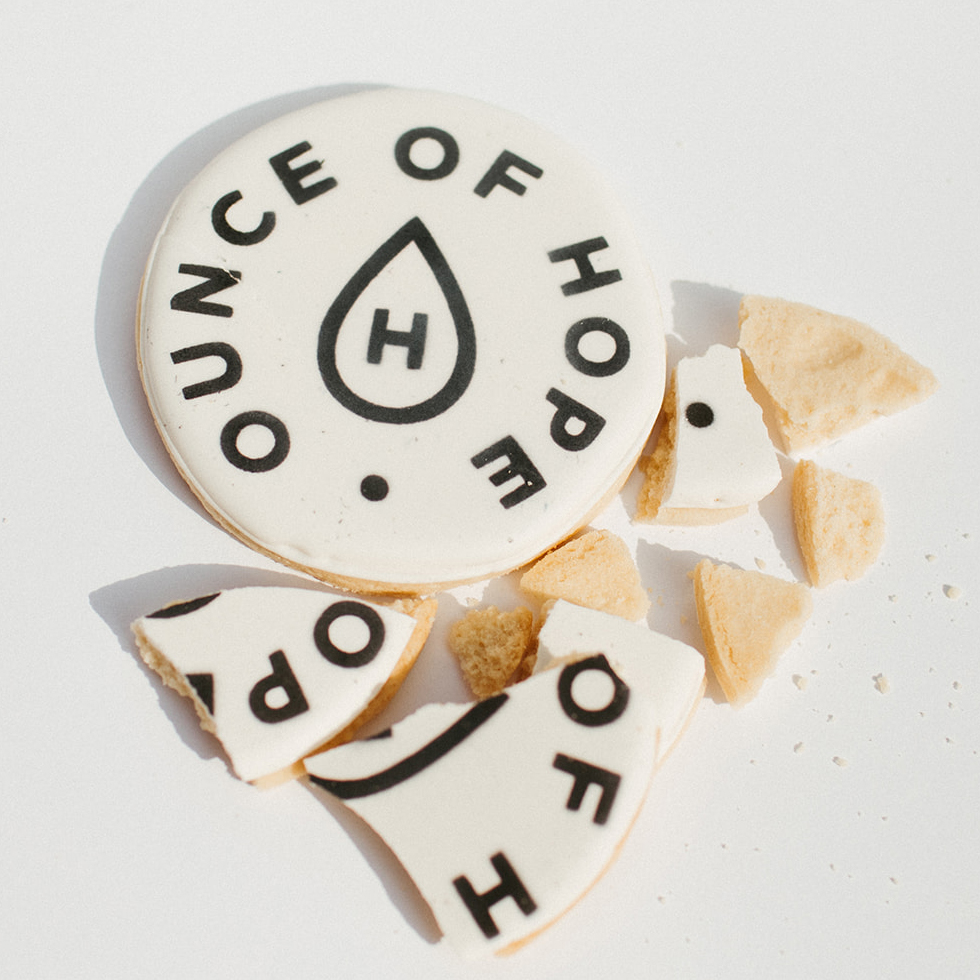 Delta 8’s Origin
Delta 8’s Origin
Regarding legal cannabis and cannabis products, Delta-8 made a name for itself quickly and efficiently. As soon as the 2018 Farm Bill went into effect, products containing delta-8 began to populate shelves.
Was delta-8 THC always present in cannabis? The short answer is yes, but its situation has a little nuance. While delta-8 is present in hemp and cannabis, naturally, the amounts found are abysmally low. There is not enough delta-8 in a natural strain to produce any effect.
The only way to make delta-8 abundant enough to use is by chemically converting it from CBD or delta-9 THC. This is a process called isomerization. Since the 2018 fam bill protects CBD hemp as a crop, the legal method of CBD conversion from hemp is the most often used approach.
Once the CBD is converted to delta-8, it is capable of psychoactive and intoxicating effects. The converted cannabinoid is not as potent as its cousin delta-9 THC but still provides a pleasant experience, according to many individual testimonies.
More About Delta 8
Delta-8 is an interesting compound. Found in low abundance, delta-8, as a naturally occurring cannabinoid, provides very little use. The low amount makes distillation an expensive and cost-prohibitive project.
The limited nature of delta-8 doesn’t leave it without value though. CBD is easily converted in bulk to delta-8 with the help of solvents and acids, “closing the loop” in its chemical chain. Once gathered in an abundant amount, delta-8 proves to carry its weight in the recreational market.
Though not as overly potent as delta-9 THC, delta-8 is still more than capable of providing a heady high. Users express that delta-8 often comes without the anxiety effect found with traditional delta-9.
Delta-8 is capable of interacting with the same endocannabinoid receptors in the human brain as its stronger cousin and is legal to produce under the current guidelines of the 2018 Farm Bill. This makes it a great alternative for people who live in states where THC is still illegal.
THC-O’s Origin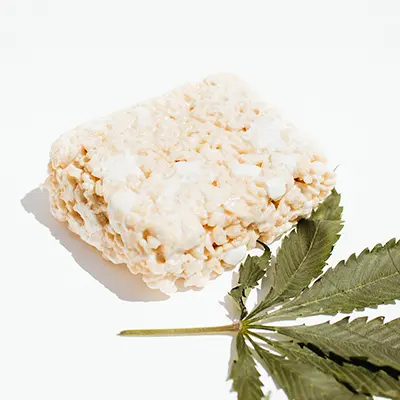
As far as human-assisted cannabis compounds go, THC-O ranks fairly high on the required help meter. The process of generating THC-O is fairly complex, and without lab equipment and a vast understanding of bio-chemistry, dangerous process.
THC-O was originally researched lightly as early as the 1940s. After finding out that THC-O provided a more intense effect on test canine’s the research more or less fizzled out and fell into obscurity.
A minor resurgence managed to pop up in the ’70s as a few determined scientists fiddled around with the concept before again disappearing below the horizon. Thanks to the 2018 Farm Bill, THC-O is finally filling the stage spot.
Now that brands like us are producing THC-O, it’s much easier to see how much goes into the process. THC-O itself is not a naturally occurring cannabinoid. Far from it, THC-O requires an exact approach to become a viable compound.
THC-O is derived from hemp. The hemp is first processed to convert the CBD to delta-8 THC. After the delta-8 has been refined, it has to be converted to THC-O through an isomerization process.
The delta-8 THC is submerged in an organic solvent causing the chemical chain to alter. What you end up with is THC-O acetate. This new compound is what dominates headlines today.
More About THC-O
THC-O is lauded as a heavy-weight cousin to delta-9 THC. Regarding raw psychoactive strength, THC-O is speculated to be up to three times stronger than delta-9 THC and somewhere between five to 8 times stronger than delta-8.
The compound interacts with the same endo-cannabinoid receptors as CBD and delta-9 THC but has been reported to have psychedelic and hallucinogenic effects. The effects have been compared to low doses of mescaline or even psilocybin, akin to magic mushrooms.
However, research on THC-O’s safety is still low, with negative impacts found in test animals. The human experience is minimal, and anyone planning to try THC-O should proceed cautiously.
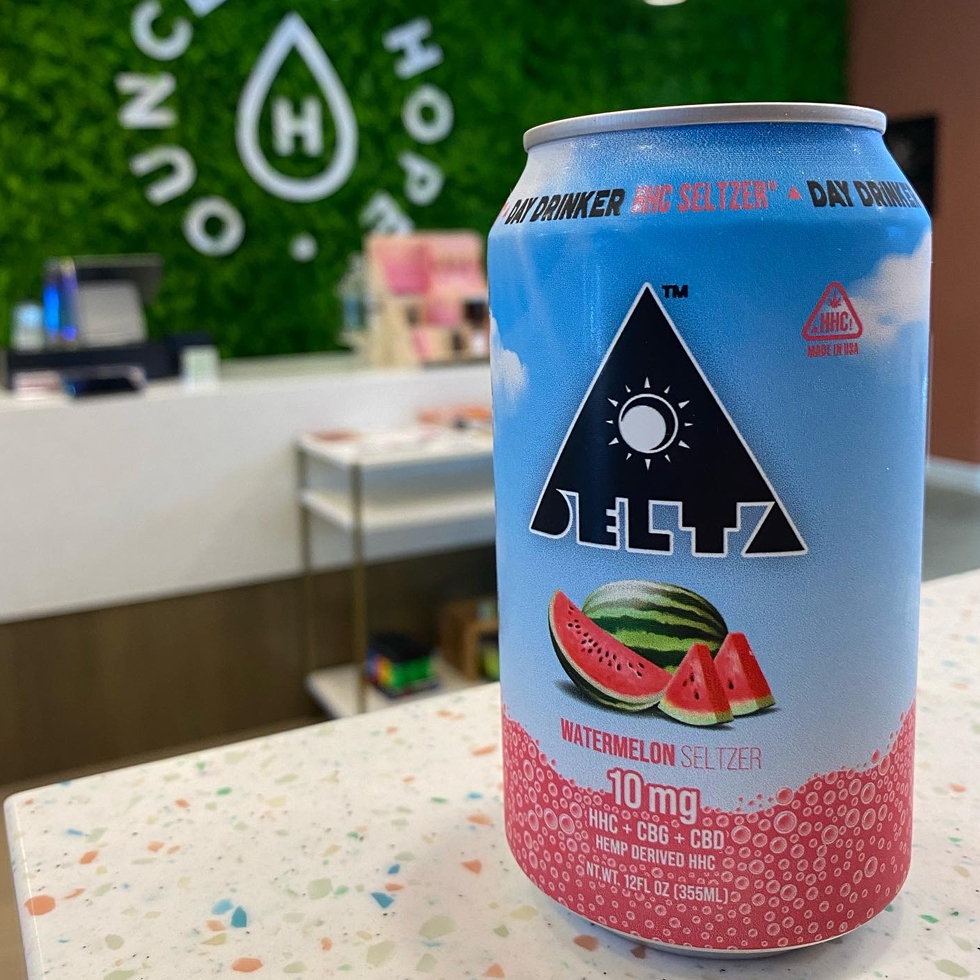 HHC’s Origin
HHC’s Origin
HHC has a fascinating history as far as bioavailability is concerned. While minute traces have been found in certain strains, any usable or researchable amount of HHC has been synthesized in a lab setting.
HHC was first produced by a chemist named Roger Adams, and he achieved it by adding hydrogen molecules to normal Delta-9 THC.
Adding hydrogen molecules is known as hydrogenation and isn’t limited to compounds found in cannabis. For example, hydrogenation is also responsible for converting vegetable oil to margarine.
Even though HHC originally derives from delta-9 THC, it derives specifically from hemp and its cannabinoid compounds more regularly today. In addition, hemp is a viable, legal avenue for HHC production thanks to its protected crop status under the 2018 Farm Bill.
Even though HHC derives from delta-9 THC, the resulting compound is less potent than its starting point. Most user accounts suggest that HHC falls closer to delta-8 in intensity.
The intensity of HHC isn’t easily guaranteed yet, as the chemical makeup of HHC results in two different forms of the compound.
The two end products fall into the categories of active and inactive. Active HHC compounds produce a psychoactive effect, while inactive compounds produce nothing. For a batch of HHC to be considered useable, at least half of the compounds must be active.
Separating the inactive and active HHC has proven difficult and cost-prohibitive at this stage, so the whole batch needs to be usable.
More About HHC
HHC has proven to be a very interesting cannabinoid. However, producing viable amounts of HHC can be a bit daunting and even outright impossible without proper laboratory settings.
Since the only fully legal way to acquire material for HHC is through CBD-based hemp, the process is broken down into multiple steps.
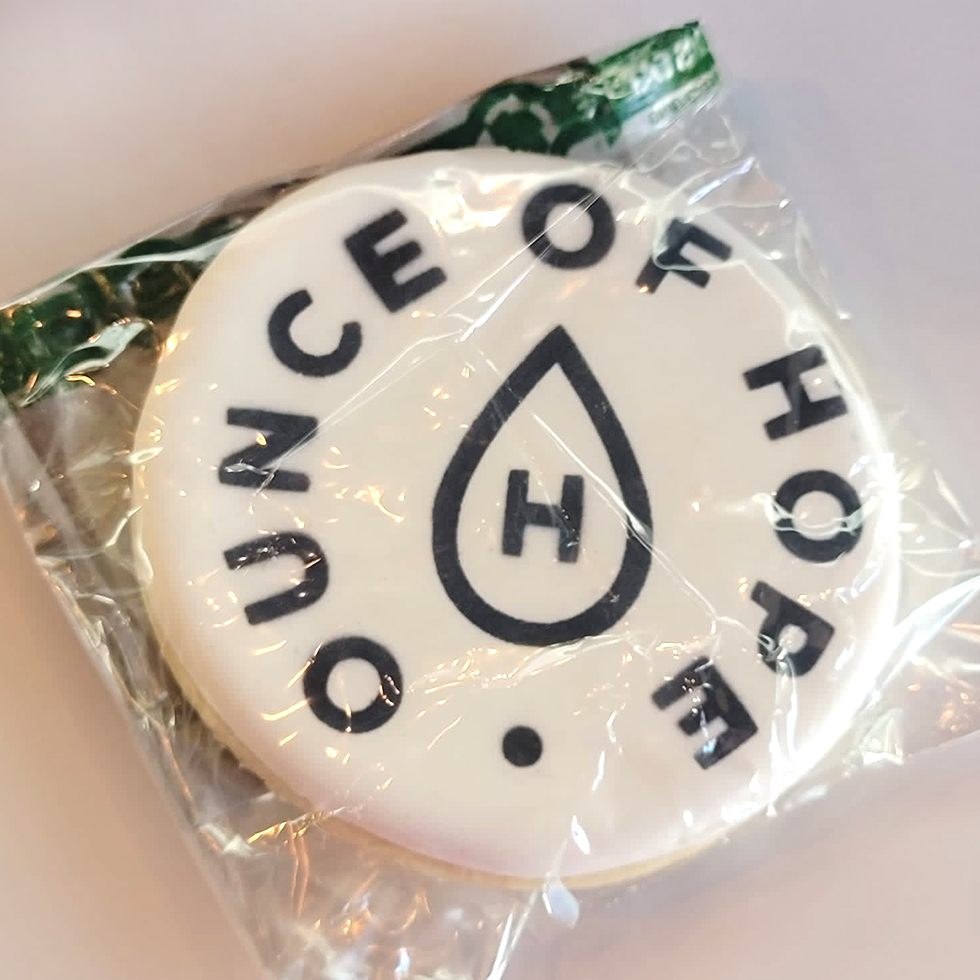
First, CBD is extracted and distilled from raw hemp. After isolating the CBD, the lengthy process of converting the newly formed delta-8 into HHC begins. The final transformation requires a chemical reactor and produces HHC in usable amounts.
While the process of making HHC is stable in itself, as the production scales up, the dangers do as well. The biggest threat in mass-producing HHC comes from the quantity and equipment necessary.
The main risk comes from static discharge that could cause an explosion, so mass producers take extensive measures to reduce this risk to near zero through dedicated safety practices.
Where to Buy These New Cannabinoids
Now, it’s time to divulge where to get these new and exciting hemp compounds. We sell a variety of each, so get ready because you’re in for a treat.
Where to Buy Delta-8
There’s a lot to love with our selection of delta-8 THC products. From oils and cartridges to cookies and gummies, we’ve got a bit of everything. Enjoy what fits your taste buds by sorting through our many delta-8 products.
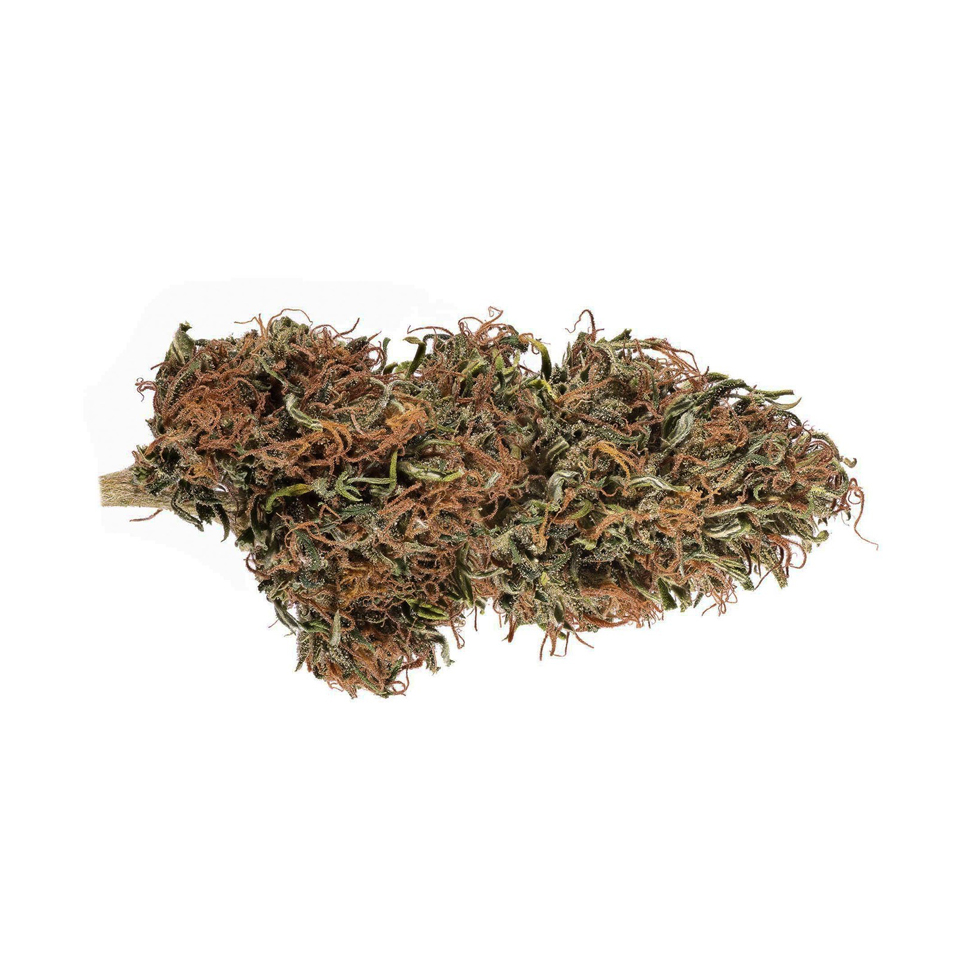 Where to Buy THC-O
Where to Buy THC-O
Imagine a THC edible three times stronger than regular THC, and you’ve got THC-O. That’s what’s in store when you get our THC-O Mellow Bar, similar to a rice cereal marshmallow treat we all know and love. If sweets aren’t your thing, though, or you’d just prefer smoking, we have authentic THC-O flower, too.
Where to Buy HHC
Finally, there’s the Day Drinker, filled with 10mg of HHC, CBG, and CBD. The HHC is what draws people in, but the CBD and CBG create an entourage effect you won’t forget. We’re rather proud of the formula, so do be sure to give it a sip!
Final Thoughts: Where Did These New Cannabinoids Come From?
So, as you can see, these new cannabinoids are a fun and exciting new path through hemp. There’s nothing to be afraid of, especially when they’re well-regulated and lab-tested. Our products are all proudly tested through a third-party lab to ensure consistency, accuracy, and purity.
What’s left then but to give one a try? Be sure to browse through our products today to see if one of the new cannabinoids catches your eye!
